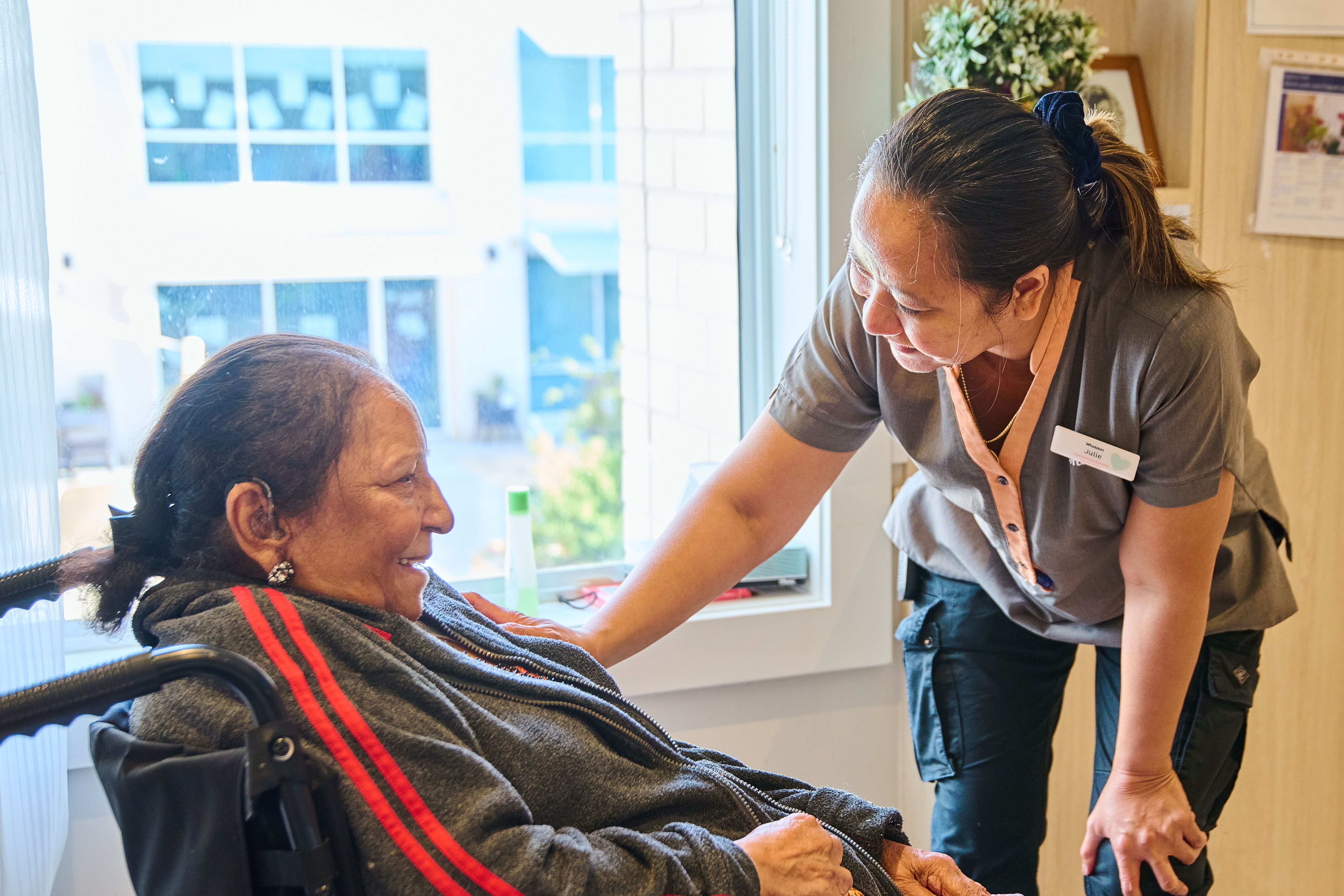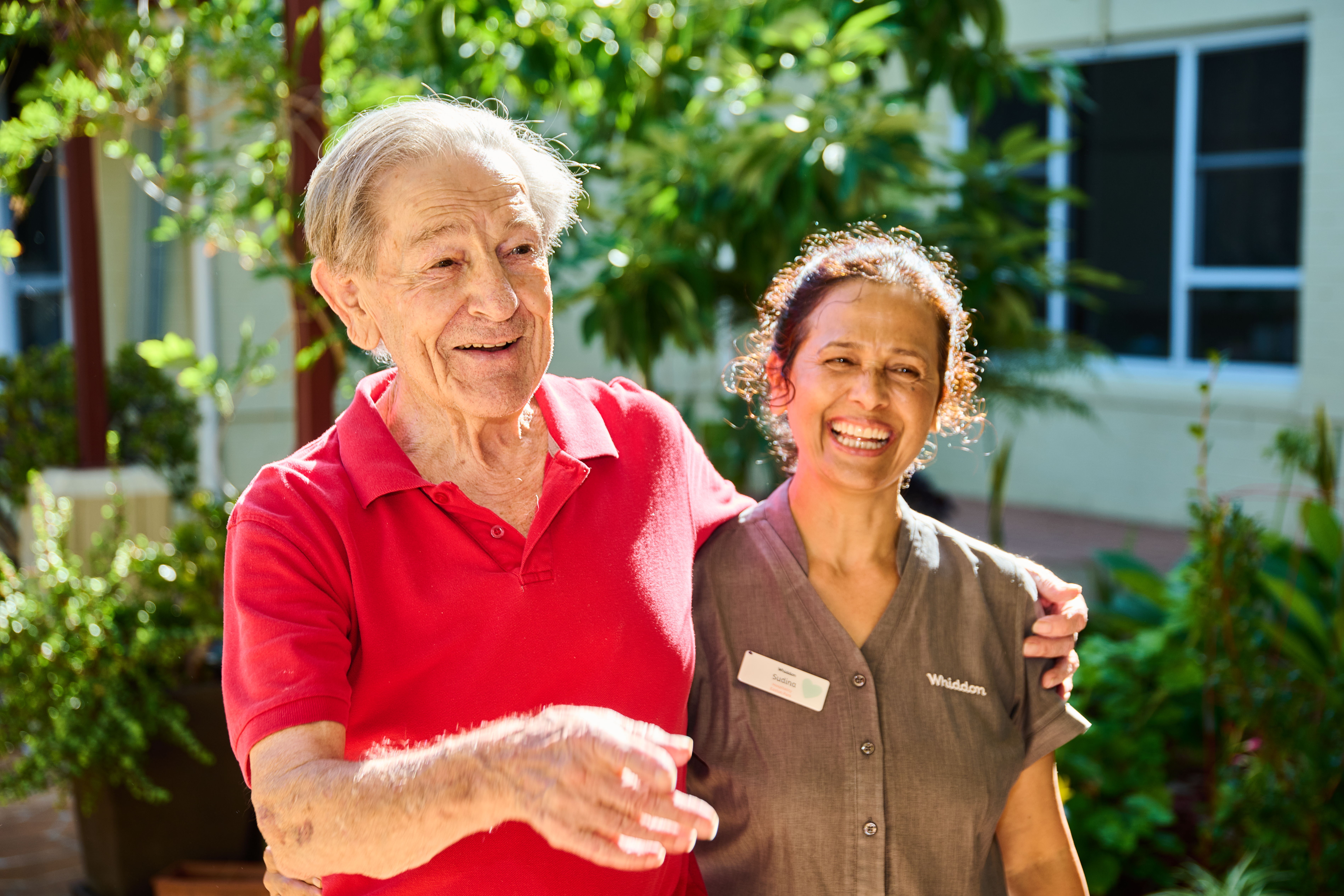Why The Aged Care Sector Needs A Major Overhaul on Overseas Nurse Recruitment
Leading regional provider, Whiddon has issued a timely call for the removal of the restrictive barriers faced by international nurses to help with Australia’s chronic nursing shortage.
5 May 2024
Leading regional aged care provider, Whiddon, has today issued a bold call for the Federal Government to overhaul the process on recruiting overseas nurses just a week out from the Federal Budget. Currently, international nurses face a series of challenges to accreditation in Australia, including accessing bridging qualifications to work as a Registered Nurse.
The residential care sector currently needs 6,000 Registered Nurses to meet the new Mandated Care Minute regulations, leaving many providers precariously placed. By next year, it’s estimated that Australia’s demand for all nurses (across all sectors) will exceed supply by approximately 85,000.
Challenges to recruit more nurses from overseas include cost concerns, the lengthy time process and less than ideal location restraints forced on prospective RNs.
Whiddon Executive General Manager People & Culture Jacky Hopwood believes investing to streamline the process and reduce complexity would assist overseas nurses in becoming fully registered more quickly.
“Estimates indicate that we require more than 50 permanent full-time RNs between now and October (2024). This includes both current vacancies across our homes, and to allow for the impact of the Mandated Care Minute changes for the industry.”
In addition to recruiting locally, one of Whiddon’s current strategies is to recruit skilled RNs from overseas to meet the urgent need and ensure the delivery of quality care to Australians across its regional, rural, and remote communities.
As Jacky explains, Whiddon currently has 30 overseas RNs working as Assistants In Nursing as they navigate the system to become fully qualified in Australia.
“In some instances, they have chosen to remain as AINs and not commence the relevant steps due to financial reasons, they are unable to support the fees and take the time off work to study and attend the locations for exams.”
Whiddon has several solutions that would assist removing these barriers to accessing overseas nurses. Commonwealth programs aimed at nurses, similar to programs to attract GPs o regional locations, is one option. This includes incentives like visas, education and relocation costs in exchange for relocating and remaining in the regions.
Another answer would be to increase the number of locations where examinations can occur, particularly in NSW and to remove fringe benefits tax implications to employers who support employees with the costs of visa programs or education.

Aged care providers must also keep up with changing international markets and standards. The UK is aiming to increase the number of nursing training places by 34% to 40,000 by 2028 and 53,858 (80%) by 2031.
“We’re not just competing against hospitals in our own regions for staff. Improving and streamlining the process here would help providers like Whiddon compete more effectively internationally,” says Jacky.
Cost Barriers and Limited Incentives to Join the Aged Care Sector
It can cost up to $10,000 to register an overseas trained aged care nurse as a Registered Nurse. This includes expenses relating to time off current work, travel expenses, as well as accommodation and visa costs.
Jacky wants to see more incentives for prospective nurses in coming to regional Australia for work in the aged care sector.
“Financial support should be considered given the costs associated with the current process to attract and retain nurses in regional locations. Currently, a lot of these costs are being absorbed by employers.”
Whiddon believes there is an industry need to chart a positive path forward using an integrated approach between both Federal and State Governments, cooperatively working with the care provider. Providers currently struggle to compete with state-health initiatives luring staff to regional, rural and remote areas. This is having a cannibalising effect on the workforce with hospitals offering up to $20,000 to sign on nurses and in some instances, an additional $10,000 worth of incentives.
Extended Delays in Accreditation Process
There are currently between 12-18 month waiting times on successful RN applications and for overseas trained nurses to register with Australian Health Practitioner Regulation Agency (AHPRA).
After submitting necessary documents, it takes between 4-6 weeks to obtain an Internationally Qualified Nurses and Midwives (IQNM) assessment. The nurses must then sit a multiple-choice question exam from The National Council Licensure Examination for Registered Nurses (NCLEX-RN).
Waiting for these results takes another 6 weeks before candidates undertake the Object Structured Clinical Exam (OSCE), a three and a half hour written assessment. Upon completion of these, the nurse can apply for registration with AHPRA which can take another 2 months.

Increased investment in the sector to reduce waiting times is vital when many Australians are running out of time and health to receive the quality relationship-based care they deserve.
“In all, it probably takes between 2-3 years to bring out an overseas nurse before they are finally qualified in Australia,” said Jacky Hopwood.
Time challenges are heightened in regional, rural, and remote towns such as Moree and Narrabri, where it can take up to 10 weeks to recruit a Registered Nurse.
Limited Locations for Mandatory Exams
Prospective nurses also face travel hardships in trying to obtain RN status in Australia with Adelaide the only examination centre to sit the compulsory OSCE.
In some relieving and good news for the sector, AHPRA has partnered with the Nursing & Midwifery Board of Australia (NMBA) in Melbourne to establish a second site where nurses can sit the mandatory OSCE assessment to become an Australian-registered RN.
Whilst this is a positive step, it isn’t enough for providers like Whiddon, whose homes are located primarily in regional NSW, to make a real dent in the nurse shortage.
“There will continue to be backlog across the country. Each state and territory require their own assessment centre to enable a more efficient registration process for internationally qualified nurses.”
“Currently there is a cap on the number of registrations processed each year and unfortunately one additional centre is unlikely to increase this dramatically to keep up with demand in the sector.”
Removing the restrictive barriers to nurse in Australia would help providers like Whiddon meet their RN targets and allow for more overseas nurses to be assessed and registered in a timely manner.
Streamlining this process would ease the burden on all areas of the health system including not-for-profit regional providers like Whiddon so it can keep delivering its quality relationship-based care.
About Whiddon
Whiddon is an award-winning care provider that aims to inspire every day in its 23 RAC homes across NSW & SE QLD. Its purpose is to enrich people’s lives and make a real difference.
Whiddon has been providing exceptional care to older Australians and people with disabilities across regional, rural, and remote NSW and QLD for more than 75 years.
Whiddon proudly partners with academics and universities to remain at the forefront of innovation as it leads the latest thinking, programs, and training around quality of life and ageing.

